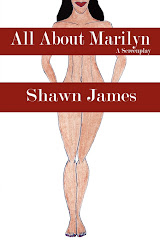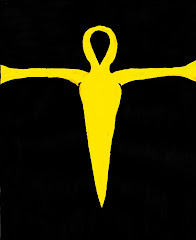I'm a big time comic book fan. But there's something is wrong with the way the comic book industry sells its product. I mean, the books just aren’t selling like they used to. Way back in the 50’s and 60’s comics were selling one million to three million copies a month. Nowadays they barely sell between twenty to fifty thousand copies a month. After doing some research on the comic book industry's approcahes to business, I realize the entire business model for distribution of these 32 page magazines is just Bizarro.
A long time ago the Comic Book distribution system was similar to the one magazine publishers like Cosmopolitan and Vogue use today. Even book publishers like Random House and Viking still use this business model for the distribution for their hardcover and softcover books. The model was: Publishers provided retailers with the magazines at a low wholesale price, (usually 55-60? % off the cover price) retailers sold what they could, then returned the leftovers (remainders) for credit on next month’s issues or towards another magazine/book on the list. Thanks to this de facto distribution agreement comic books found themselves in supermarkets, drugstores, newsstands and big chain stores like Woolworth, Wal-Mart and K-Mart. The heavy discounts publishers gave allowed them access to shelf space in these big shopping venues and this access led to more readers finding the product. This led to big sales for everyone for many years, both making profits on the volume of books sold.
Somehow in the 90’s the distribution model for comic books changed. Comics Distributors like Diamond decided that their merchandise was so valuable they could create a new better distribution system for it. Under this new business model for distribution of comic books retailers are required to order their comics at a higher wholesale price (now 30-35 percent off the cover price). This means retailers pay close to full cover price for any books they order. Worse, they get no return credit on unsold copies towards other books on the list or next month’s products. That means if the comics don’t sell the retailer is stuck with them.
Thanks to this new distribution model, many of the smaller retailers like grocery stores; drugstores and newsstands that sold most of the comic books in the United States started dropping them from their inventories. Without the wholesale discount or the return credit for new merchandise, there’s no incentive for any retailer in the country to stock comic Books period. Due to the razor thin profit margin in retail, most retailers simply cannot afford the risk of stocking comic books.
So why did the comic book industry change its distribution model from one every publishing company in the world has used for decades? I’m still scratching my head about this one. Do comic book distributors know anything about retail outside of a comic shop? I don’t think they do. Holding onto old unsold comics may be part of the culture in the collectibles market, but in an retail establishment no businessperson wants to maintain inventories of old merchandise for years speculating whether or not it will go up in value.
In the retail business it’s all about moving merchandise and moving it quickly. The longer merchandise sits on the sales floor in a store the more money a retailer loses. To a retailer, a comic book is a product just like candy, cookies or a dress. The faster product moves, the faster profits can be made. Under the current distribution model it’s just not profitable for a retailer to stock comics. Having to pay near full price for comics at wholesale, they have to sweat for 30 days hoping to sell all of them and hope none of the merchandise gets damaged during that period. (merchandise will get damaged it always does). After 30 days they can’t give customers markdowns on leftover copies no matter how damaged they become because they’ll take a loss on that merchandise. Add to this the inability to get a return credit on unsold merchandise and it’s easy to understand why retailers don’t stock comic books anymore.
For small retailers like newsstands, drugstore and grocery stores who make their living on this razor-thin profit margin there are many more profitable products to stock than comic books. Stuff like candy, toys necklaces, balls and other novelty items that will move quickly and appeal to children. These items cost anywhere from 50 cents to a dollar; these cheap novelties move quickly and can be reordered and returned without a hassle.
Contrast this to the price of a comic book. Comic books costs anywhere from two fifty to four dollars and don’t move as quickly as those cheap sundry items; having little appeal to small children and less appeal to teenagers. Add to that the high wholesale price the inability to return unsold issues and it’s easy to understand why most retailers have decided to use the space on their sales floor for other merchandise.
Plain and simple the publishers in the comic book industry need to get real about the flawed distribution system they’ve adopted for the sale of comic books. The business model the industry has adopted for the sale and distribution of comic books in the United States is crippling the industry and preventing it from competing with the rest of the publishing world.
Looking closely at the distribution model for comic books business model it’s almost similar to the one subsidy publishers use to rip off their authors. In the subsidy publishing “industry” authors are often charged high setup fees ($10,000 to 30,000), demand authors buy thousands of books, offer low discounts, (20%to 30%), charge high list prices for merchandise ($20 for a paperback book, $35 for a hardcover) and make merchandise non-returnable. In the end the author gets box upon box of poor quality books unfit for sale and the subsidy publisher makes off with all the money.
Compare the subsidy publishing business model to one comic book distributors currently use. At the end of the day, Comic book publishers are actually paying distributors not to sell their merchandise on the mass-market. Thanks to the high setup fees compounded with the high production costs on a comic book, comic publishers, especially independents and small publishers who have tight budgets are operating at a loss every month. Due to the high cover prices, poor discounts and no returnability; major retailers outside of comic shops won’t stock comic books. That means Customers have no access to merchandise outside of a comic shop which means no profitability for everyone except the distributor. Bizarro.
Thursday, September 28, 2006
Monday, September 11, 2006
The three roads a writer can take towards publication
Getting a book published has been a lifelong dream for me. Ever since I was ten years old I’ve always wanted to get one of my stories published and in print on a bookstore shelf. From my experiences on this journey I’ve learned there are three roads a writer can go on in their quest for publication:
Print on Demand/self publishing. This is where the author spends their own money to publish their work. It works best for poetry, family memoirs and niche stories with small markets like my first book Isis. The goal is to get the author’s work on the market and introduces their writing to the audience. With decent promotion can come enough sales to cover the costs publishing POD novel if a writer spends a couple of hundred dollars on the project. Master salespeople like Michael Baisden, Mary B. Morrison and Teri Woods can sell thousands of books. I’m working on becoming like them.
Shawn’s advice on Print on Demand Publishing: This can be a profitable venture if a writer understands what they are getting into. The writer must understand THEY will be responsible for the editing, cover design, and the overall finished product. There will be no support from bookstores and no distribution outside of online retailers. The writer will have to spend money to find customers and target their audience. The writer will have to get the word out for their book. On the journey down this road prepare to lose a lot of sleep. This is a second job.
Sending Query letters and submitting manuscripts to the New York and California Literary agents. This is the process of trying to get representation by one of the well-connected agents who network with the big publishers. Querying is where a writer submits a one-page letter and detailing their book’s premise, audience and a short biography to an agent in the hopes they’ll read part of the book it or the whole manuscript. For a response, the author must include a self-addressed stamped envelope with enough postage to cover the return of materials.
Let me state this clearly: having representation by an agent doesn’t guarantee publication. Having a good agent only increases a writer’s odds of getting their work read by an editor at a publishing house. Going down this path is a crapshoot with 90% of the odds against the author.
On this road authors must look out for pitfalls like scam agents. These predators promise easy access and charge fees. More often, they participate in kickback schemes with “editorial services”, “book doctors” and “subsidy publishers” that swindle writers out of thousands of dollars. To paraphrase the late Johnnie Cochran: If an agent charges any fee the author has to flee!
Shawn’s advice for authors traveling down the road to getting an agent: DON’T quit your day job. DON’T expect anything to happen quickly. Lotto tickets will probably pay off before most writers get an agent. Most agents get more work than they can handle, so just submit that query letter and SASE and forget about it.
Query and submission to the New York and California Publishers. There are a ton of small publishers out there looking for stories. Writers can submit their partials (first three chapters and synopsis) to small publishers like Genesis Press, Harlequin Books and Dorchester Publishing and have them reviewed by editors. Fantasy writers can submit manuscripts electronically to Baen Books and Tor/Forge books.
Shawn’s advice for authors traveling down this road: DO NOT QUIT YOUR DAY JOB! Lotto tickets will probably pay off before these publishers contact you. It usually takes 8-12 months for them to respond to a submission of any kind.
Each of these roads sounds bleak doesn’t it? Not really. A lot of writers beat the odds. But it’s mostly due to an individual author’s hard work and determination to succeed. They have realistic expectations and understand they get what they put into the experience. Writing the story is one thing, selling it is another. So a writer must not only be adept at their storytelling craft, but a savvy businessperson as well.
Print on Demand/self publishing. This is where the author spends their own money to publish their work. It works best for poetry, family memoirs and niche stories with small markets like my first book Isis. The goal is to get the author’s work on the market and introduces their writing to the audience. With decent promotion can come enough sales to cover the costs publishing POD novel if a writer spends a couple of hundred dollars on the project. Master salespeople like Michael Baisden, Mary B. Morrison and Teri Woods can sell thousands of books. I’m working on becoming like them.
Shawn’s advice on Print on Demand Publishing: This can be a profitable venture if a writer understands what they are getting into. The writer must understand THEY will be responsible for the editing, cover design, and the overall finished product. There will be no support from bookstores and no distribution outside of online retailers. The writer will have to spend money to find customers and target their audience. The writer will have to get the word out for their book. On the journey down this road prepare to lose a lot of sleep. This is a second job.
Sending Query letters and submitting manuscripts to the New York and California Literary agents. This is the process of trying to get representation by one of the well-connected agents who network with the big publishers. Querying is where a writer submits a one-page letter and detailing their book’s premise, audience and a short biography to an agent in the hopes they’ll read part of the book it or the whole manuscript. For a response, the author must include a self-addressed stamped envelope with enough postage to cover the return of materials.
Let me state this clearly: having representation by an agent doesn’t guarantee publication. Having a good agent only increases a writer’s odds of getting their work read by an editor at a publishing house. Going down this path is a crapshoot with 90% of the odds against the author.
On this road authors must look out for pitfalls like scam agents. These predators promise easy access and charge fees. More often, they participate in kickback schemes with “editorial services”, “book doctors” and “subsidy publishers” that swindle writers out of thousands of dollars. To paraphrase the late Johnnie Cochran: If an agent charges any fee the author has to flee!
Shawn’s advice for authors traveling down the road to getting an agent: DON’T quit your day job. DON’T expect anything to happen quickly. Lotto tickets will probably pay off before most writers get an agent. Most agents get more work than they can handle, so just submit that query letter and SASE and forget about it.
Query and submission to the New York and California Publishers. There are a ton of small publishers out there looking for stories. Writers can submit their partials (first three chapters and synopsis) to small publishers like Genesis Press, Harlequin Books and Dorchester Publishing and have them reviewed by editors. Fantasy writers can submit manuscripts electronically to Baen Books and Tor/Forge books.
Shawn’s advice for authors traveling down this road: DO NOT QUIT YOUR DAY JOB! Lotto tickets will probably pay off before these publishers contact you. It usually takes 8-12 months for them to respond to a submission of any kind.
Each of these roads sounds bleak doesn’t it? Not really. A lot of writers beat the odds. But it’s mostly due to an individual author’s hard work and determination to succeed. They have realistic expectations and understand they get what they put into the experience. Writing the story is one thing, selling it is another. So a writer must not only be adept at their storytelling craft, but a savvy businessperson as well.
Thursday, September 07, 2006
Writing: Part time hobby, Full time Job
I now spend over 50-60 hours weekly writing content on four different writing projects I’m currently working on. I look at all the work I do on these unpaid personal projects and all the hours I’m putting in developing them and it’s like I’m running my own business. For a part time hobby my writing is slowly turning into a full time job.
Currently I’m in the final stages of preparing my second novel to be self-published, The Cassandra Cookbook. The book is almost ready for Print on demand Publication. The final draft of the manuscript is polished, the cover art is complete, I’ve drafted up the marketing plan and estimated the cost of a start-up budget. Now I have to work out the financing.
I’ve completed work on my fourth novel The Temptation of John Haynes. My original goal was to finish writing the manuscript in January 2006, but a bad case of writer’s block and an erratic work schedule kept me from completing that novel until this summer. At 121,000 words it’s the longest book I’ve ever written. With the manuscript complete I can get to work on the hardest part of writing that book: Editing and Revisions.
Also on Temptation, I’ve drafted up a query letter and synopsis. I’m submitting it to publishers and literary agents, but I don’t expect any responses except form rejections. The publishing industry is tough to break into; and with me writing this book in a unique genre like Black Fantasy Fiction my odds of getting published are lower than 0.5%. My first instinct with this book is to go Print on Demand with it, but I want to try all avenues before heading down the costly POD path.
In addition to the books, I post movie reviews on amazon.com. My rank is in the 5,000’s and my goal is to get it in the hundreds. So far I’m maintaining my position. Since I love movies, I definitely will be posting there more regularly with more movie reviews and book reviews.
I’d like to do some more screenwriting. It’s a different style of writing that I’d like to master. The ability to tell a story with the least amount of words is a great challenge and I’m starting to get the hang of it. But I’ve put that off my plate for the past year. I might pick it up again, but I don’t know when.
I’d also like to get back to drawing. It’s been ages since I’ve sketched up something. I’d love to break out my colored pencils and pen and whip up some drawings. Soon. Very Soon.
Then there’s this blog. It’s the most neglected of my writing projects. I’ve been meaning to come back here every Monday and Thursday with a new essay about an issue in the Black community from a Black man’s point of view, but all the editing work on the other books keeps me from getting back here with new content. But with the books out of the way, the blog will be getting more attention.
Currently I’m in the final stages of preparing my second novel to be self-published, The Cassandra Cookbook. The book is almost ready for Print on demand Publication. The final draft of the manuscript is polished, the cover art is complete, I’ve drafted up the marketing plan and estimated the cost of a start-up budget. Now I have to work out the financing.
I’ve completed work on my fourth novel The Temptation of John Haynes. My original goal was to finish writing the manuscript in January 2006, but a bad case of writer’s block and an erratic work schedule kept me from completing that novel until this summer. At 121,000 words it’s the longest book I’ve ever written. With the manuscript complete I can get to work on the hardest part of writing that book: Editing and Revisions.
Also on Temptation, I’ve drafted up a query letter and synopsis. I’m submitting it to publishers and literary agents, but I don’t expect any responses except form rejections. The publishing industry is tough to break into; and with me writing this book in a unique genre like Black Fantasy Fiction my odds of getting published are lower than 0.5%. My first instinct with this book is to go Print on Demand with it, but I want to try all avenues before heading down the costly POD path.
In addition to the books, I post movie reviews on amazon.com. My rank is in the 5,000’s and my goal is to get it in the hundreds. So far I’m maintaining my position. Since I love movies, I definitely will be posting there more regularly with more movie reviews and book reviews.
I’d like to do some more screenwriting. It’s a different style of writing that I’d like to master. The ability to tell a story with the least amount of words is a great challenge and I’m starting to get the hang of it. But I’ve put that off my plate for the past year. I might pick it up again, but I don’t know when.
I’d also like to get back to drawing. It’s been ages since I’ve sketched up something. I’d love to break out my colored pencils and pen and whip up some drawings. Soon. Very Soon.
Then there’s this blog. It’s the most neglected of my writing projects. I’ve been meaning to come back here every Monday and Thursday with a new essay about an issue in the Black community from a Black man’s point of view, but all the editing work on the other books keeps me from getting back here with new content. But with the books out of the way, the blog will be getting more attention.
Subscribe to:
Posts (Atom)





